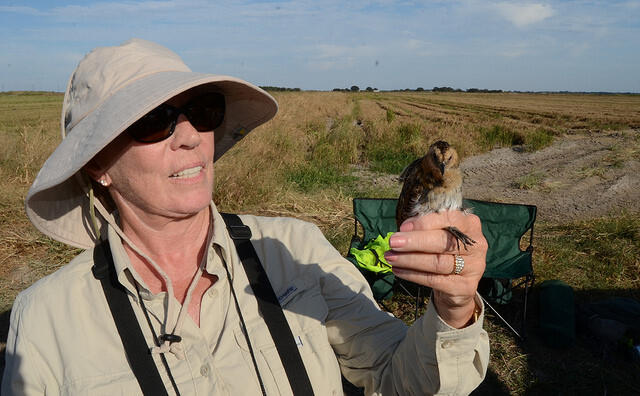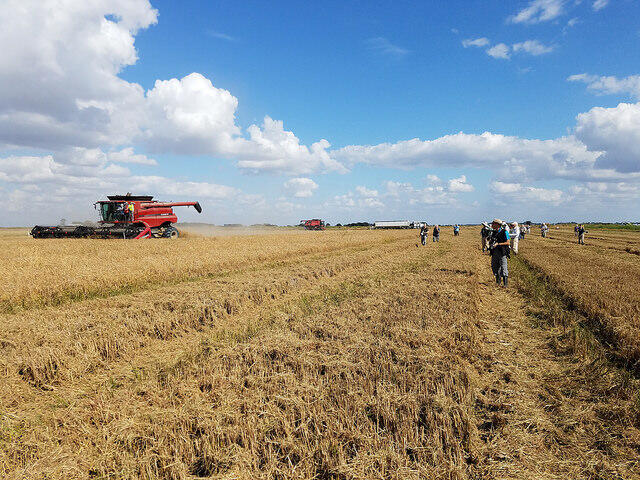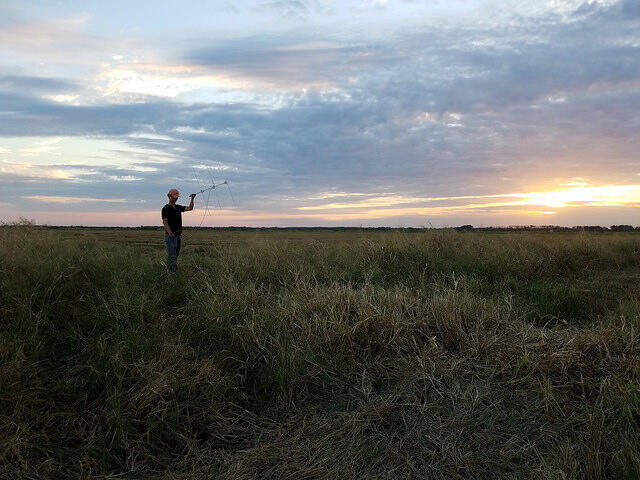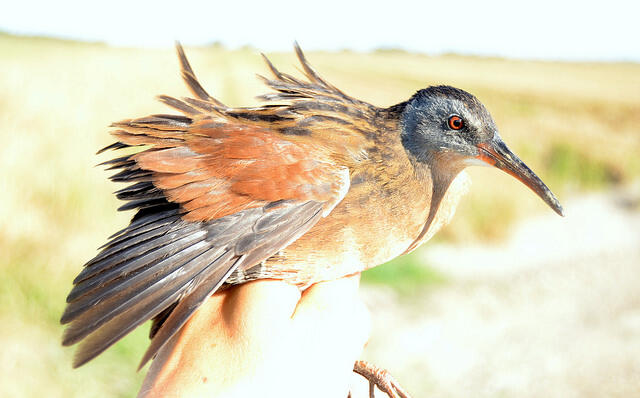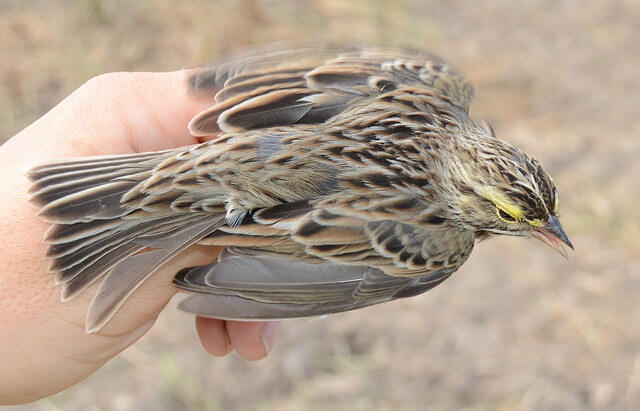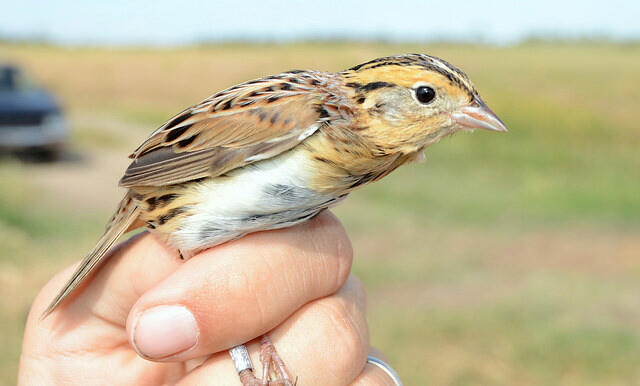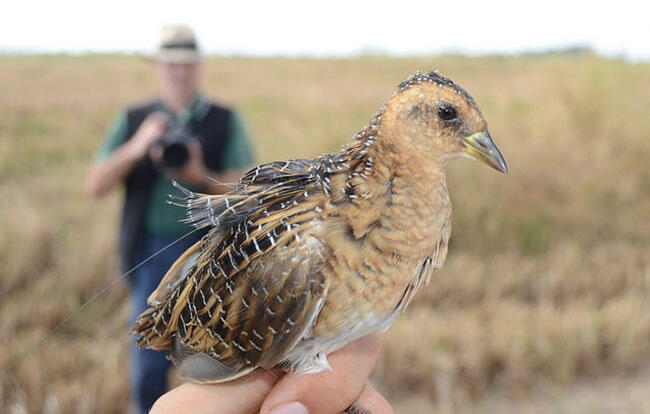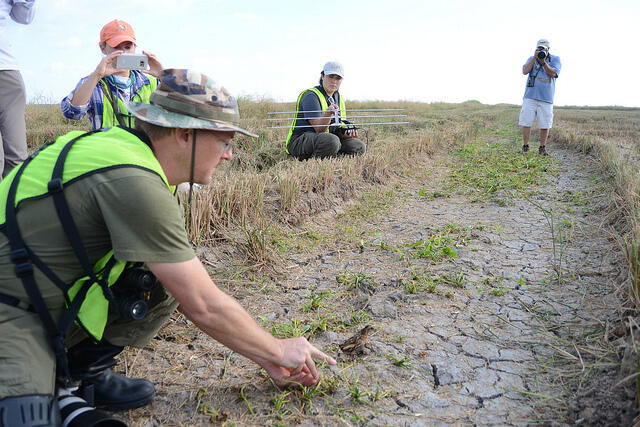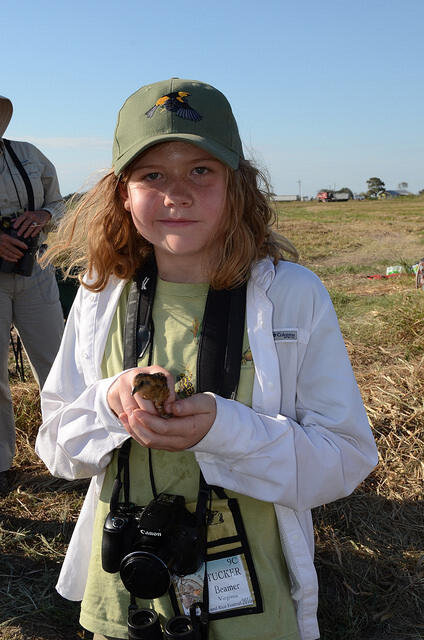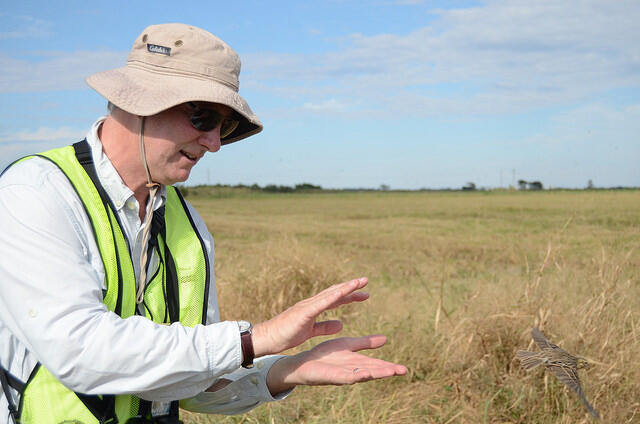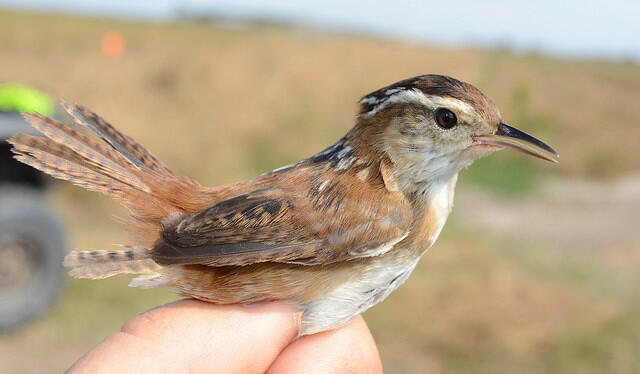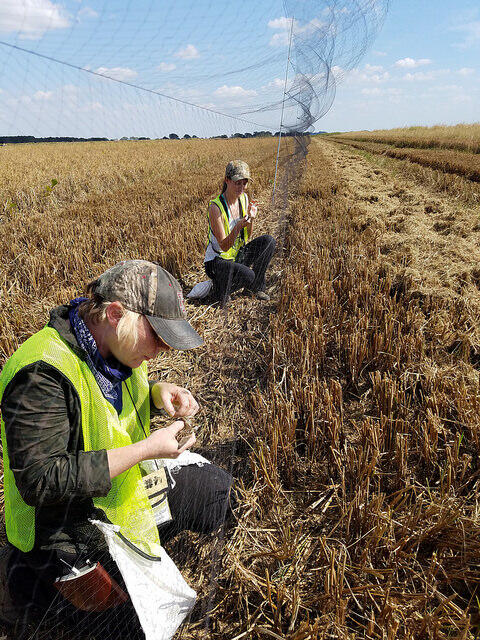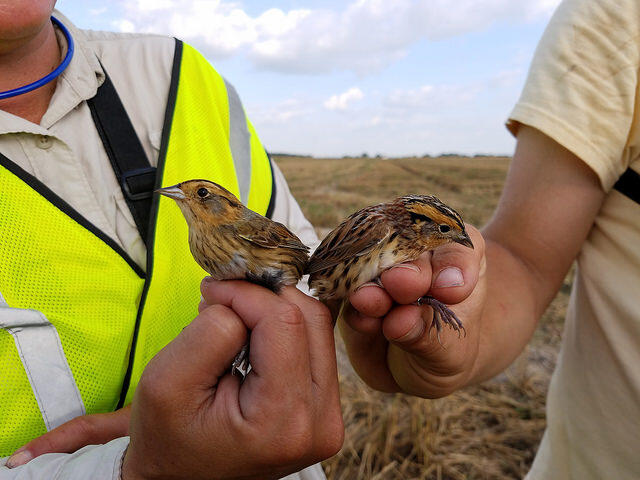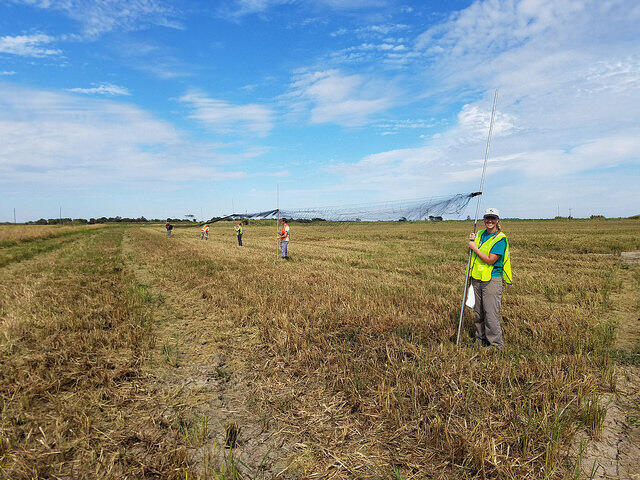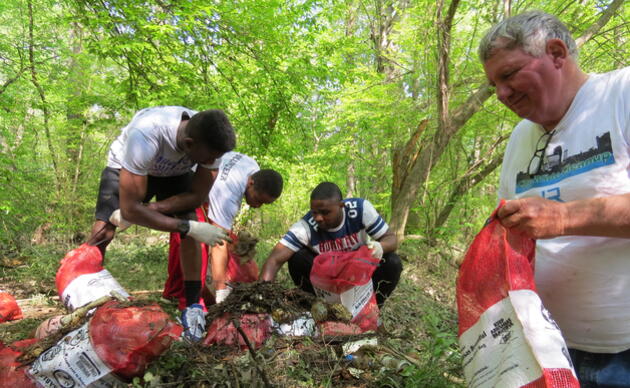Meet the cutest member of the rail family - the Yellow Rail. This secretive bird is rarely seen, breeding in remote freshwater wetlands and wet meadows in the northern U.S. and southern Canada, and migrating south to the Gulf Coast and southeastern U.S. in the winter. I’ve jokingly speculated that the Yellow Rail simply walks the 1,000-mile trip to Louisiana through a maze of tall grasses and vegetation, which of course isn’t true (they probably migrate primarily at night).
However, there is one place and time each year where you can reliably see many Yellow Rails. During the fall “ratoon” rice harvest in southwestern Louisiana, Yellow Rails can be seen flushing from the many acres of rice fields. It’s not uncommon to see dozens of Yellow Rails over the course of several hours during this time. Louisiana State University Museum of Natural Science curators Steve Cardiff and Donna Dittmann have observed and studied this phenomenon for many years, and in 2009 developed a bird watching festival from this unique opportunity called the Yellow Rails and Rice Festival (YRARF). YRARF takes place each year in late October or early November when Kevin Berkin, who farms thousands of acres of rice in the Thornwell area, welcomes festival participants to his fields to watch this exciting event.
Audubon Louisiana works with Steve, Donna, and Kevin during the festival to catch and band Yellow Rails for studying opportunities. We also host a banding workshop to teach participants certain banding techniques, such as how to determine the age of various kinds of birds.
In 2014, we embarked on a project to use VHF telemetry to study local movements and staying time of Yellows Rails in the rice, utilizing festival proceeds to purchase the necessary equipment. Dan Mooney volunteered his time to follow these birds around for several days, or more accurately, followed the “pings” emitted by the VHF tags to pinpoint the birds’ locations, as they secretly moved among the rice stems hidden from view.
This year, Lisa Elizondo, a graduate student at Louisiana State University, purchased seven nanotags (similar to VHF tags) that can be detected from a stationary receiving station. These receiving stations were deployed in the area by Louisiana Department of Wildlife and Fisheries ornithologist, Michael Seymour. While the birds are in the rice, there is too much interference for the tower to detect the birds. But, as they begin their long-distance flights, the tower picks up the signal and provides an exact departure time. These datasets will allow us to evaluate how long Yellow Rails stay in the rice region before continuing their fall migration, presumably to winter in coastal marshes.
The great flood of 2016 in August almost derailed the festival this year because of the impact on the region’s rice crops. Fortunately, a prolonged dry spell in October helped ensure that some fields were ready to be harvested at the normal time. Over a period of three days, we hosted 13 Banding Workshop participants with the help of 20 volunteers who moved mist-nets from field to field to catch birds. We successfully deployed all seven nanotags, catching 12 Yellow Rails during the festival - our best year yet! We also caught a number of exciting and interesting species, including Nelson’s and Le Conte’s Sparrow, Sedge and Marsh Wren, Virginia Rail, and Sora.
Where these Yellow Rails go for the rest of the winter remains a mystery for now, but with a network of nanotag receiving stations placed around the Gulf Coast and the country, it is possible that one or more of our birds could be detected elsewhere, possibly even closer to their breeding grounds next spring. The prospect of revealing detailed connections between prairie pothole wetlands, Louisiana rice fields, and Gulf Coast marshes for the first time in Yellow Rails is extremely exciting and will have important implications for how we think about the conservation of continental-wide habitat linkages that this species greatly depends on.








